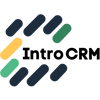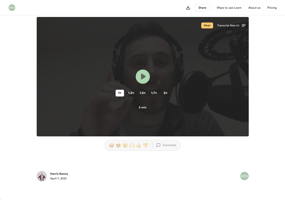So many people talk about wanting to run a “passive income” business but the reality is that...
9 Tips for Handling Inbound Leads at Scale
You spend a lot of time, money, and effort generating inbound marketing leads. But when prospects are ready to learn more, how is your team handling inbound leads?
As an inbound sales agency, we have developed 9 ways you can optimize your inbound email response to improve your response rate, meeting rate, qualification rate, and ultimately closed-won rate.
We’ve helped manage over 10,000 prospect conversations on behalf of our clients. Through our agency services, we get paid per meeting attended, so it’s our job to ace things like this.
What are inbound leads?
Inbound leads are sign-ups, messages, registrations, from parties outside your organization who are interested in learning more about what you offer.
Who should prioritize handling inbound leads?
Everyone should… Right? Not exactly. Many products have a low price point or are not a considered purchase. In cases like this, a company should not focus on handling inbound leads per se. Instead, focusing on self-directed onboarding and product education makes more sense. There may only be a small subset of leads worth prioritizing. That’s where enrichment, scoring, and other techniques come in. But that is a post for another day.
Improving inbound email handling is going to be especially helpful for marketing leaders with small sales teams, or founders who have closers responsible for bringing in new business. The product or service is “high ticket” (read: expensive) and often has a single large expense associated with it.
Your company can sell anything from industrial equipment to educational software—we’ve learned these lessons helping all sorts of companies. The key is that you have generated or captured demand and people are interested in learning more. Handling inbound leads means dealing with partial (or incomplete) information. So they start as a marketing qualified lead and then need to be sales qualified to determine that they are a fit as a prospective customer.
How to respond to inbound leads
At a high level, handling inbound leads needs to be action-oriented, timely, and relevant. Let’s walk through some specific points about what that looks like.
- Update your team.
If marketing is trying a new campaign, a company leader just appeared on a new podcast, or you’re attending a trade show—let your sales team know! This context is critical to help them convert these new opportunities into meetings and ultimately new business. - Identify high priority leads.
An immediate answer may be required if anyone comes to your website asking for any kind of demo or request for pricing. Leads that are responded to within five minutes or lower are 100x more likely to get into your pipeline and convert according to studies featured in Harvard Business Review. This means you need to filter messages which are of higher priority versus low priority in order to hit these reply times. Having a global team trained on response time also helps to avoid time zone gaps.
Bonus Tip: Sometimes leads will come through using personal email addresses—especially if you sell to technical customers like engineers. So you will want to prioritize those coveted big companies that sign up, but don’t let the others entirely slip through the cracks either. - Leverage multiple channels.
When you’re handling inbound leads, wherever they are coming in from, remember that your prospective buyers use multiple channels during their workday. You may get inquiries via a form but engage via SMS. Use multiple channels (also known as “omnichannel outreach”) to your advantage. - Use automation.
If your lead flow is hard to keep up with, use automation. At Intro, we use shared inboxes, a tagging system, and we have a host of rules around handling out of office replies, undeliverable emails, re-surfacing follow-ups, and flagging inquiries that haven’t been responded to quickly. We also integrate with meeting scheduling tools like Hubspot, Calendly, SavvyCal, Acuity, and Cal.com. - Replies should be personable.
Your customer is in research mode when they reach out to you. And odds are, they are researching several options. You can use templates and tokens to standardize information and a human touch can elevate your standard messaging. Be accurate and helpful and ask questions, rather than trying to rush them through the next phase in your funnel. Findings from Forrester suggest that when it comes to B2B research before buying, buyers have as many as 27 interactions during the purchasing process.
Bonus Tip: Use these inbound interactions to have sales-driven collateral creation. Consider empowering your reps to create their own collateral rather than having to wait for marketing. - Refer to interaction history to avoid re-sharing information.
This is an easy one to overlook, but it’s especially important if you have a lot going on and are distracted, or rely on a team-based approach to handling inbound leads. Making customers repeat themselves is a recipe for frustration. Don’t do it! Rely on systems, including a strong CRM that puts the customer at the center and tracks interactions across platforms. - Use templates that flow.
You can use pre-written prompts to guide your replies, but make sure they flow with the overall process. You don’t want your templates to be poorly written and interrupt the earlier conversation thread. Leave your sales team room to be creative. At Intro, we have custom templates and a corresponding sales playbook for every client. - End with a clear ask or offer.
While offering value during your interactions, you also need to help your prospect move forward. Firstly, gathering context about the prospect is important and should be included in the intro part of your message. The body of the message can contain assessment, advice, and/or content. The signing-off call to action (CTA) should have a single clear ask, such as: asking a question or confirming a meeting time. - Measure your performance.
Your team may be doing their best, but their work should still be measured. How long does it take you to get back to prospects on a 24/7 basis? How many new conversations were started this week? How many of your leads are disqualified? Knowing these things helps you better manage your growth.
Of course, handling inbound leads is an evolving art and science. And nobody knows everything! What would you add? Let us know below.
Follow our latest thinking by subscribing to the Intro newsletter and podcast.


